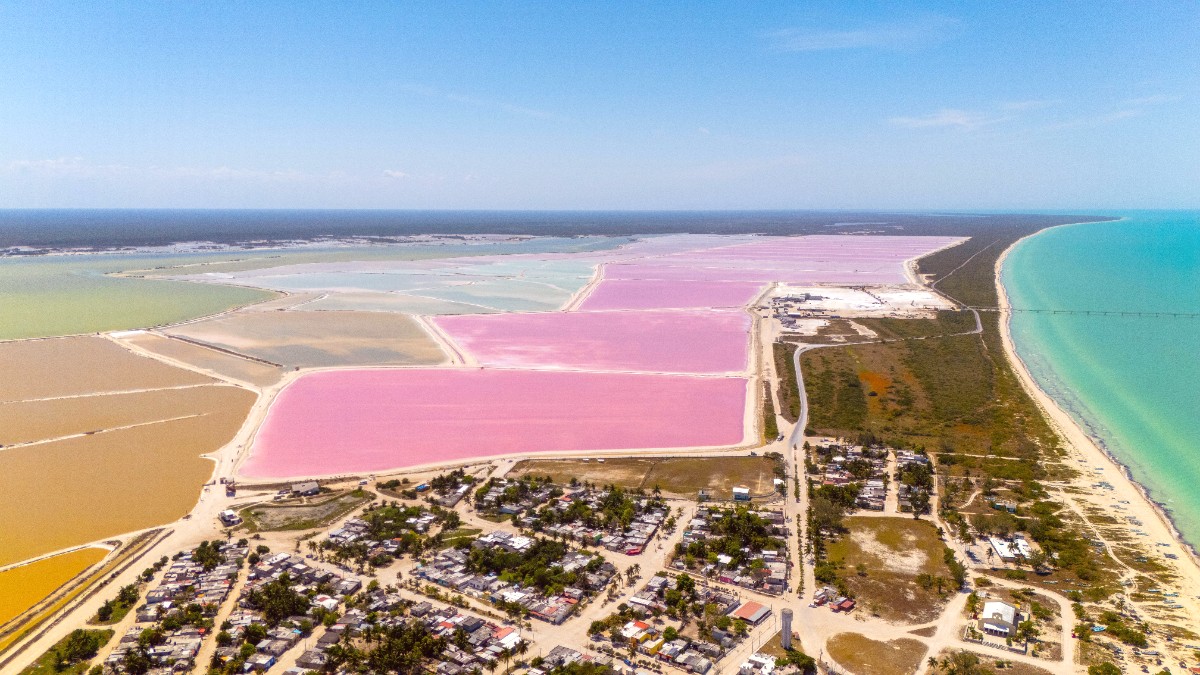
Yucatan Peninsula, Mexico
Merida's Historic Center holds several architectural and historical landmarks defining the city's character.
These sites are central to the city's identity and provide a glimpse into its past.
These institutions provide deep context for understanding Merida's rich past and present.
Haciendas played an useful role in Yucatán's economy during the 19th and early 20th centuries through henequen (sisal) production.
Many have undergone beautiful restoration, becoming museums, luxury hotels, or event venues, preserving their historical grandeur.
Some offer guided tours demonstrating the henequen process, from plant to fiber. Fees and availability vary by hacienda.
Some haciendas include access to a cenote on the property, like Sotuta de Peón's own cenote.
These estates provide a fascinating glimpse into the region's history and the lives of their owners.
The Yucatán Peninsula's unique geology provides natural wonders beyond its historical sites.
Natural sinkholes unique to Yucatán, formed by limestone bedrock collapse, revealing clear freshwater pools. Sacred to ancient Maya as underworld gateways. Vary from open-air to deep caverns. Hundreds exist near Merida (Homún, Cuzamá). Entry fees typically $5-$15 USD. Bring Water shoes and only Reef-safe sunscreen.
Coastal ecological reserve 1.5 hours west. Famous for large populations of American flamingos, extensive mangrove forests, and diverse birdlife. An UNESCO Biosphere Reserve. Boat tours from Celestún town for flamingos and mangroves. Best for flamingos: November-March. Bring Binoculars.
Merida's closest beach town, 30-40 minutes north on Gulf Coast. Popular local getaway, especially weekends. Longest pier in Mexico, a malecón (waterfront promenade), numerous seafood restaurants. Accessible by bus, colectivo, or car. Ideal for relaxed beach days.
A route south of Merida connecting several Mayan archaeological sites, including Uxmal, Kabah, Sayil, and Labná, all showing the distinctive Puuc architectural style. A full day trip for history enthusiasts.
From Progreso, fishing charters depart for deep-sea or coastal fishing, targeting species like snapper, grouper, and barracuda. A popular activity for angling enthusiasts.
The region has diverse tropical plant life and animals, including various bird species, iguanas, and occasional sightings of spider monkeys or jaguars in protected areas.
A historic cemetery west of the Historic Center. Features elaborate tombs, mausoleums, and monuments across various architectural styles. An unique cultural and artistic experience. Explore respectfully on foot.
Covered walkway next to the Cathedral on Plaza Grande. Frequently hosts art installations, temporary exhibits, and small artisan markets. A cool, shaded break and a chance to see local art or crafts. Dynamic space for new discoveries.
Charming, quieter residential neighborhood just west of Historic Center. Own central park, beautiful church (Parroquia de Santiago Apóstol), local market. A glimpse into daily Merida life away from main tourist crowds. Relaxed atmosphere, authentic eateries, still walkable.
Consider combining a visit to historical sites with natural attractions for a balanced experience.
Enhance your Merida sightseeing with convenient booking options for tours and tickets.
These platforms offer a range of experiences, from ancient ruins to city tours.
Book your entry tickets and guided tours in advance for popular attractions to save time and secure your spot.
Plan your stays and travel methods alongside your attractions to create a seamless itinerary.
Local guides bring historical sites to life with their knowledge and stories.
General resources for your overall Merida travel planning.
Merida's climate means strong sun. Wear sunscreen, a hat, and sunglasses. Stay hydrated, especially when exploring ruins or walking long distances.
Many attractions in the Historic Center are walkable. Ruins have uneven terrain. Comfortable walking shoes are a must for exploring.
Plan visits to popular sites early in the morning or late afternoon to avoid peak crowds and the hottest parts of the day. Check opening hours in advance.
Free walking tours often start from the Plaza Grande, usually in the morning. These provide a good introduction to the Historic Center's history and architecture.
Find City ToursFor archaeological sites, consider hiring authorized guides at the entrance. Their insights enrich the visit significantly.
Book Private ToursCapture the colorful colonial buildings and lively street scenes. Early morning or late afternoon light often produces the best photos. Be respectful when photographing people.
Photography ToursLocal buses and colectivos (shared taxis) offer economical ways to reach sites like Progreso. Taxis and ride-share apps are also readily available in the city.
Travel Guide InfoAlways check the most current opening hours and admission fees for museums and historical sites, as these can vary.
Museum TicketsMerida's rich history, from ancient Mayan civilization to colonial Spanish rule and the henequen boom, shaped its identity.
Taking time to understand these layers of history enriches every visit to its landmarks and museums.
For those seeking unique experiences beyond the main tourist circuit, Merida has charming, lesser-known spots.
A historic cemetery located west of the Historic Center. It features impressive, elaborate tombs, mausoleums, and monuments, displaying various architectural styles.
A covered walkway situated adjacent to the Cathedral on the Plaza Grande. This space frequently hosts art installations, temporary exhibits, and small artisan markets.
A charming, quieter residential neighborhood located just west of the bustling Historic Center. Santiago has its own central park, a beautiful church (Parroquia de Santiago Apóstol), and a local market.
Still very walkable from the main square but with a different feel.
A tranquil church and garden complex on a small hill to the south of the Historic Center. Known for its peaceful ambiance and lovely botanical garden.
Worth a short walk or taxi ride for its beauty and tranquility.
Housed in a former post office near the Mercado Lucas de Gálvez, this museum traces Merida's history from pre-Hispanic times to the present day.
A quieter alternative to some of the larger museums.
Wander through residential areas like Mejorada or San Sebastián for a glimpse of everyday Merida life and less touristy local spots.
Keep an eye out for murals and street art, especially in quieter neighborhoods or along less trafficked streets.
Many colonial buildings, even private residences, have beautiful hidden courtyards. Sometimes you can catch a glimpse or find small cafes tucked away inside.